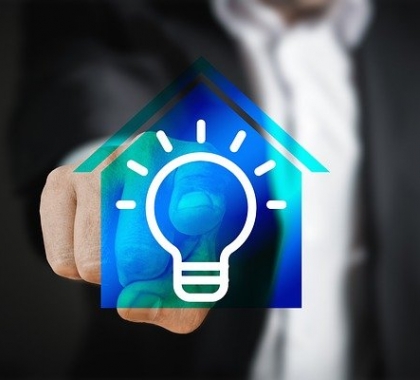Flipping on a light switch is simple enough.
Opening the refrigerator to grab a cold beverage is a routine, common convenience.
Grabbing a hot coffee to start our morning is done without much thought.
These mundane, daily chores seem extremely simple – but delivering electricity to the products that make the light come on, the beverage cold, and coffee hot is anything but simple.
Delivering electricity from where it’s initially generated to where it is consumed relies on a complex maze of interconnected transmission and distribution lines, substations, transformers, and other equipment.
When thinking about the path of electricity, a simple analogy might be a long-distance car trip. The start point is typically a large power plant and the end destination is a home/business. The “road trip” is coordinated and regulated by third-party regional entities, depending on where the “road trip” takes place—that is an Energy Education 101 article for a future newsletter. For this article, we’ll stick with the basic path of electricity, from its generation source to where it is ultimately used.
GENERATION TO TRANSMISSION
When electricity is generated, it leaves the generation source and travels to a step-up substation. These substations increase the voltage or electric energy pressure, so it can move long distances over transmission lines. Voltage relates to pressure — the higher the voltage, the longer electric energy can travel. It’s similar to water traveling through a garden hose – increasing the pressure (by narrowing the opening) causes the water to travel faster giving it the capability of traveling farther.
The step-up substation typically increases the voltage to 345,000 volts for electricity to begin its journey on the high-voltage transmission system. These transmission lines can be identified by their large steel structures. Using our “road trip” analogy — these lines can be thought of as the “Interstates” for electricity travel.
STEPPING DOWN VOLTAGE TO LOCAL SUBSTATIONS
After traveling along high-voltage transmission lines, electricity is then delivered to local substations where it is stepped down to a lower voltage (34,500 to 115,000 volts) so it can be used by large industrial users, which require higher voltage power (2,300 to 4,000 volts) than homes or small businesses to run heavy machinery.
From there, electricity is stepped down even more by transformers in neighborhood substations and on electric distribution system line poles so it can be delivered safely to homes and businesses through local distribution electric lines.
The act of simply flipping on a light switch or grabbing a cold/hot beverage is simple – but it’s amazingly complex when you really think of what all it takes to have electricity delivered to where we need it when we need it. Not to mention that the whole process takes place instantaneously in real-time, 24 hours of every day, all year round.
* * *
Energy Education 101 is an ongoing NMPP Energy series focusing on energy-related topics with the goal of providing straightforward, agenda-free information that can help provide a better understanding of the energy that powers our modern society.

